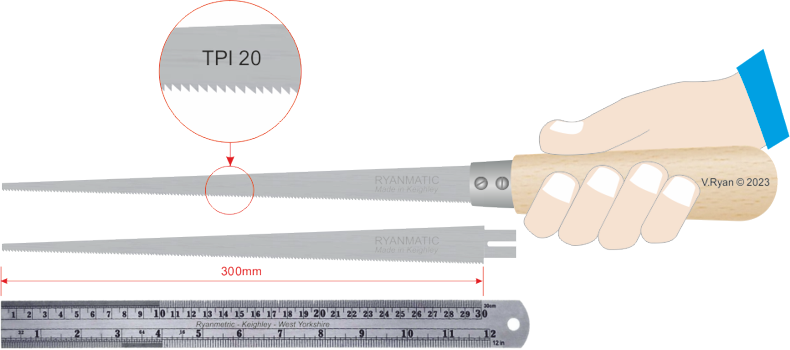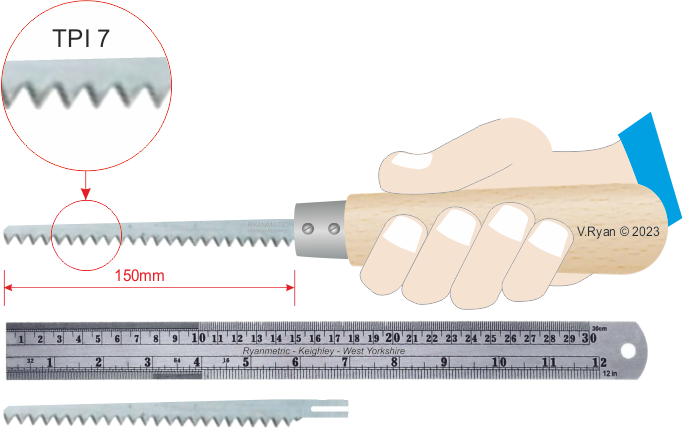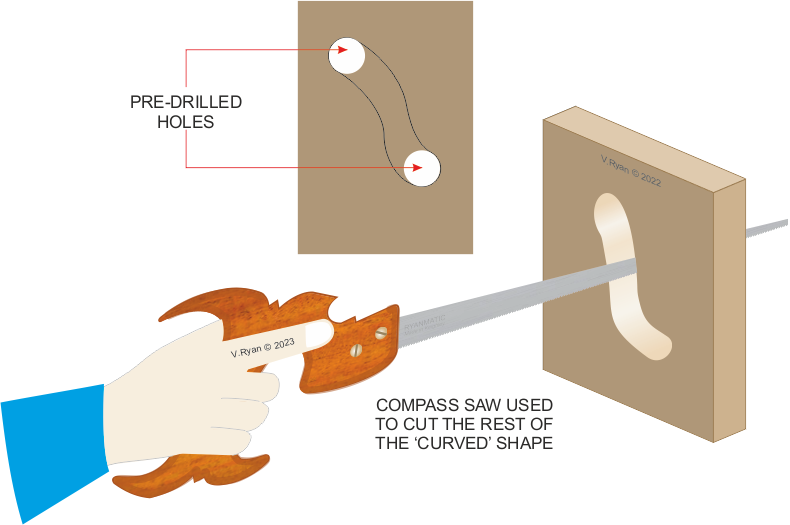V.Ryan © 2023

The blade can be replaced by loosening the screws in the ferrule and removing the old blade.



| CLICK HERE FOR INDEX PAGE |
| THE COMPASS SAW |
V.Ryan © 2023 |
| PDF FILE - CLICK HERE FOR PRINTABLE WORKSHEET |
| CLICK HERE FOR POWERPOINT VERSION OF WORKSHEET |
| THE COMPASS SAW |
| The compass saw has a narrow blade with fine teeth (TPI 20 - teeth per inch) and is typically between 150mm to 300mm in length. It is sometimes mixed up with the padsaw, which has a short blade and more prominent, coarse / larger teeth (7m to 10 TPI teeth per inch). |
| The compass saw is used for cutting curves and irregular holes, when access is restricted, or when working in a confined area. The blade of most compass saws, can be replaced by loosening the screws in the ferrule, and removing the old blade. |
 |
| THE PADSAW |
| Padsaws usually have a short, robust, coarse blade. This type of saw has similar characteristics to the compass saw, but produces a ‘rougher’ finish. It is used for less refined / less delicate work, compared to the compass saw. The blade can be replaced by loosening the screws in the ferrule and removing the old blade. |
 |
| AN ALTERNATIVE STYLE OF COMPASS SAW |
| This another common style of Compass saw. The handle is similar to those of a tenon saw and dovetail saw (sometimes called a ‘pistol grip’). This type of handle is often regarded as more comfortable to hold. |
 |
| When cutting a curved, internal shape (see below), start by drilling at least one hole, through which the blade fits. Drilling two holes or more, is also an option, depending on the shape being cut out. |
 |
| CLICK HERE FOR EQUIPMENT AND PROCESSES INDEX PAGE |
|